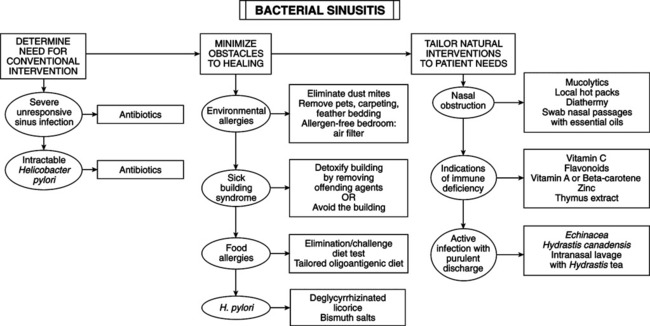• History of acute viral respiratory infection, dental infection, or nasal allergy • Nasal congestion and purulent discharge • Fever, chills, and frontal headache • Pain, tenderness, redness, and swelling over the involved sinus • Transillumination shows opaque sinus • Chronic infection may produce no symptoms other than mild postnasal discharge, a musty odor, or a nonproductive cough. • Antibiotics: their value is limited and efficacy is controversial. Analysis of clinical trials: Antibiotic treatment in acute maxil-lary sinusitis in general practice population is not sufficiently based on evidence. They are warranted in severe or unresponsive cases. Newer, more potent antibiotics (lactam antibiotics) are more effective than penicillin, amoxicillin, and other less-potent antibiotics. Even less evidence exists of significant benefit in • Allergy: approximately 84% of those with chronic sinusitis have allergies. • Screen chronic sinusitis patients aggressively for environmental and food allergies. Control the patient’s environment. Eliminate dust mites by washing at temperature of at least 58° C, using air-filtering vacuum cleaner and air cleaner with high-efficiency particulate air filter, and keeping humidity <50%. Remove all pets, carpeting, and feather bedding, if necessary.
Bacterial Sinusitis
DIAGNOSTIC SUMMARY
THERAPEUTIC CONSIDERATIONS

![]()
Stay updated, free articles. Join our Telegram channel

Full access? Get Clinical Tree


Basicmedical Key
Fastest Basicmedical Insight Engine
